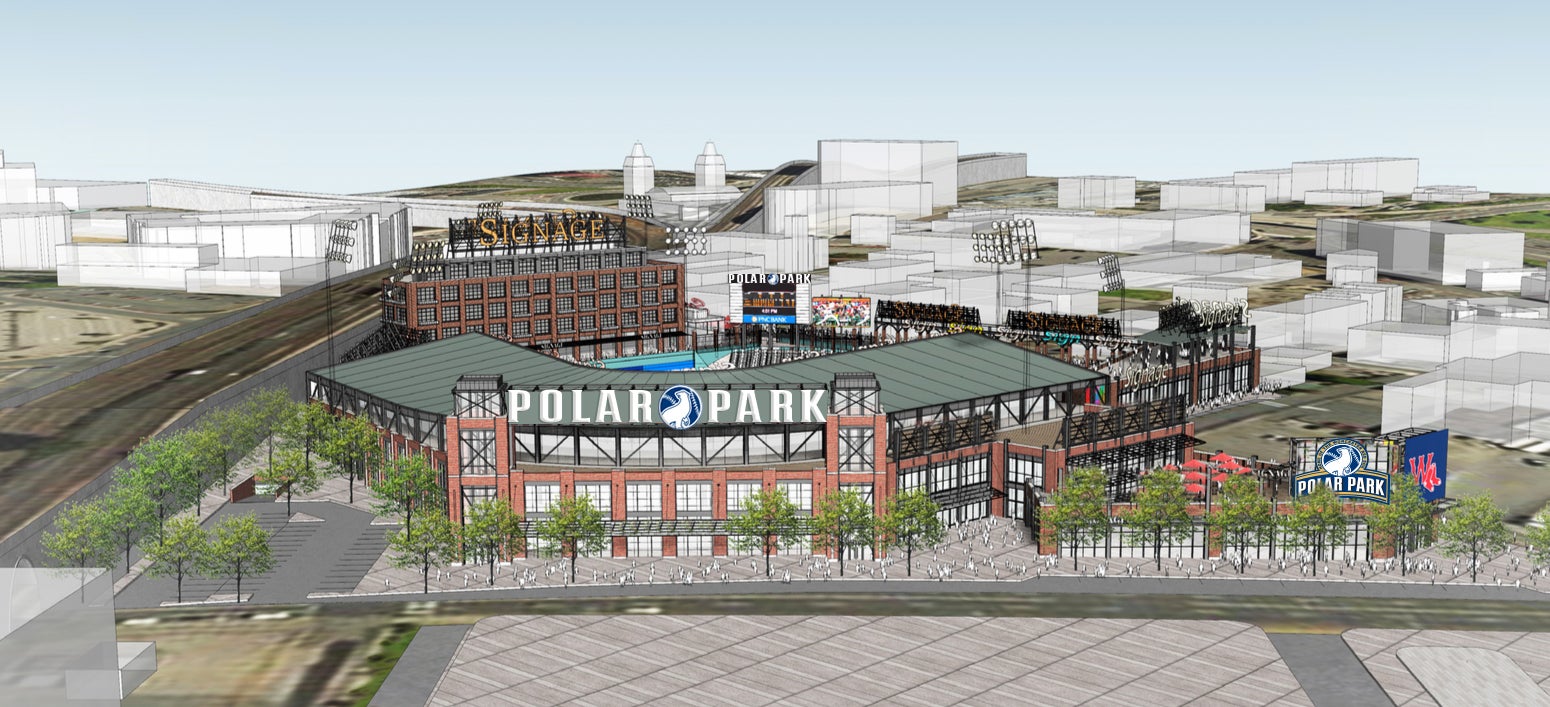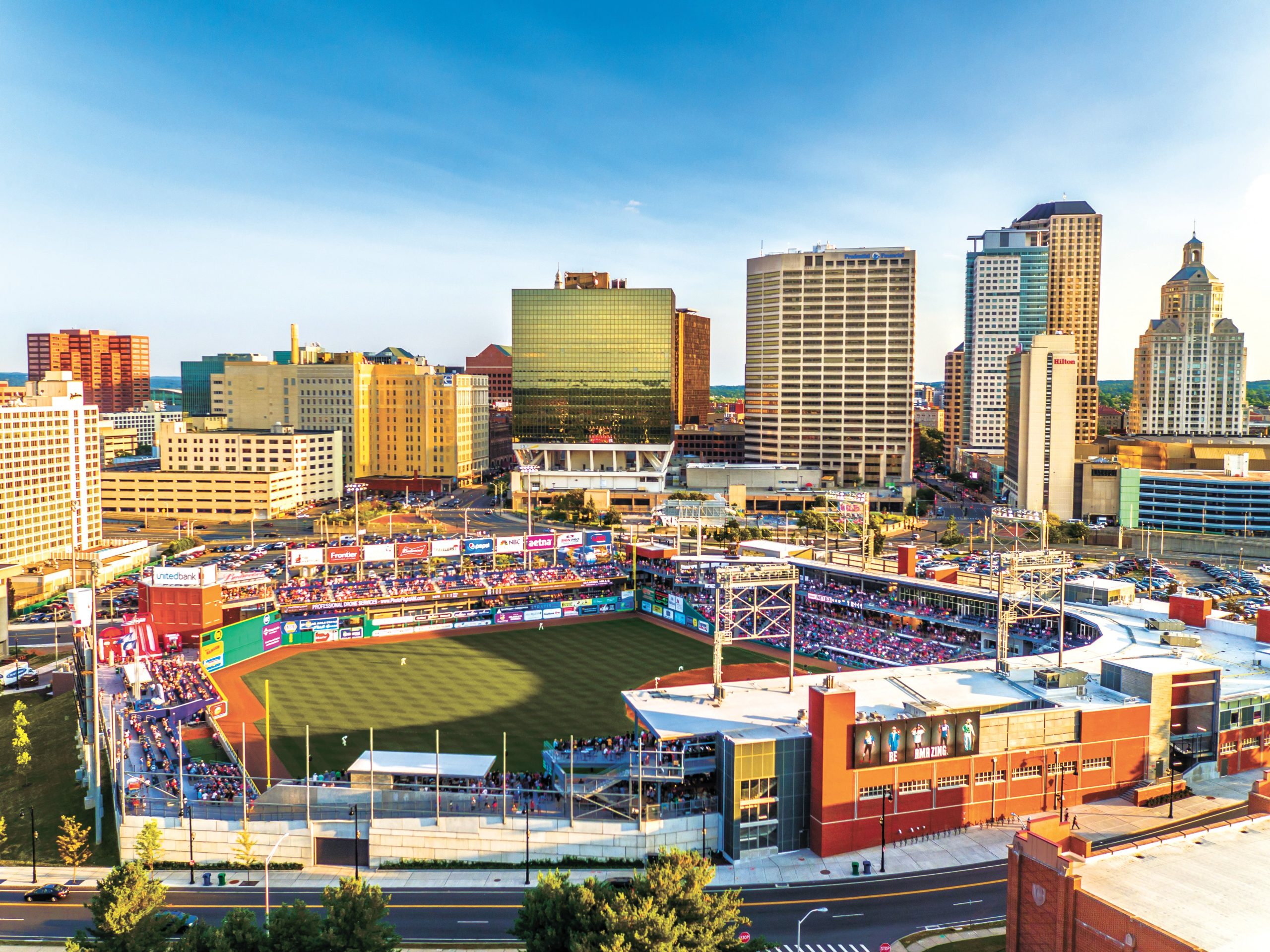A minor league ballpark opened this April in Las Vegas was built in just 14 months, and one that opened in 2015 in Nashville took 15 months.
The Pawtucket Red Sox and Worcester officials will wish for the same pace with construction of Polar Park.
With the Worcester Red Sox set to begin play in a new $101-million Canal District stadium in April 2021, the city, its contractors and the team need its planned construction timeline – set to begin in July – to stay on track in order for the team to avoid pitfalls befallen other minor league clubs, like playing entire seasons on the road.
With 21 months to complete the stadium, the PawSox, the City of Worcester and contractors Gilbane Building Co. of Providence and AECOM Hunt of Los Angeles are well within the typical timeline to complete such a project. But as the fourth most expensive minor league stadium ever on a complex building site fraught with contamination and other construction issues, officials from those organizations must stay on schedule to avoid the lengthy delays and cost overruns that have plagued other ballclubs.
[Related: Polar Park joining an arms race for more elaborate, immersive ballpark experiences]
Worcester officials say they’re on track to break ground on the ballpark in July, with construction beginning more in earnest this fall. Chief Development Officer Michael Traynor said dates specified in contracts were aspirational and the project remains on schedule.

Kathryn Crockett, the president of the Worcester architectural firm Lamoureux Pagano Associates, expressed confidence in those leading the ballpark project. Lamoureux Pagano has worked well in the past with Gilbane.
“I thought that was great when the city contracted with them for the project,” Crockett said. “That bodes well.”
A look around Minor League Baseball shows ballparks that came together quickly, as well as those that dragged on, forcing cost overruns or for teams to play elsewhere in the meantime.
Cost overruns and delays
Most notoriously, Hartford, Conn., planned to build a ballpark for the Hartford Yard Goats in just 13 months and failed badly. The team had to play an entire season on the road, and the park had so many construction mistakes the city fired the contractor. The park, Dunkin’ Donuts Park, opened a year late and $10 million over budget in 2017.

In Omaha, Neb., a park hosting the College World Series each year opened in 2011 after a 27-month construction process. That park, TD Ameritrade Park, built on a parking lot, was not a particularly challenging site.
MGM Park in Biloxi, Miss., opened two months late in 2015, forcing the team to play 55 road games to start its season. Just this year, a new ballpark in Fayetteville, N.C., opened on time after just a roughly 19-month construction period, but costs ballooned from an initial $33 million to $40.2 million as crews worked to keep the project on pace.
In Wisconsin, a more rushed timeline – less than a year – for a smaller, 4,000-capacity ballpark has forced the Milwaukee Milkmen to play on the road this season through June 24.

Both the Fayetteville and Milwaukee delays were blamed on weather.
Construction began on Las Vegas Ballpark in February 2018 and was completed in time for this April. That park, though, was built on a flat dirt site in a warmer climate and cost $150 million.
In Sacramento, Raley Field was built in roughly eight months in 2000. In that case, the team had little choice but to build the park very quickly, moving from Vancouver. In order to get the park open on time, the team’s owners – which paid for and own the stadium – brought in masons from around the country to work around-the-clock shifts. The park couldn’t open in time for the first games that year and came in 15% over budget.
Nashville’s new ballpark, First Tennessee Park, was completed in little over a year – but went $10 million over budget. Project officials pinned the overages at least in part on a rushed timetable and contaminated soil at the site.
Louisville Slugger Field in Kentucky offers a similar comparison to Worcester. The ballpark was built in 17 months on a sprawling warehouse site. The park opened in 2000 at a cost of $27.8 million.
Complexities in Worcester
The Polar Park site off Madison and Washington streets is not one especially conducive to a quickly built project.
Businesses standing on the site today still need to move out, and their buildings demolished.
Two lingering issues could cause delays and budgetary headaches: contamination and a culvert under the site.
The contract between the city and the team acknowledges the site’s industrial past but says significant clean-up has already taken place. Conditions today are manageable, according to the agreement.
The project is avoiding the culvert under the site due to its time and cost, but if the project is forced to address that issue, it will impact the timeline.

The stadium property has topographical considerations, with a slope of as much as roughly 18 feet from Madison Street. Worcester’s winters could also pose challenges to keeping pace.
“Those can be impediments to progress, there’s no question about it,” Crockett said.
Still, Crockett praised the work of Russell Adams, the assistant commissioner of Worcester’s Department of Public Works & Parks, and said the city’s leadership on the project is key, particularly on such a complicated project.
“There are a lot of good alignments for the success of this project,” she said
